Although the world’s most important and significant works of art have long since been acquired by the foremost European and American museums, the Pinakothiki offers, among its exhibits, a comprehensive collection of modern Greek painting dating from the beginning of the nineteenth century, and a fine collection of prints by Western European masters, from Durer to Dali.
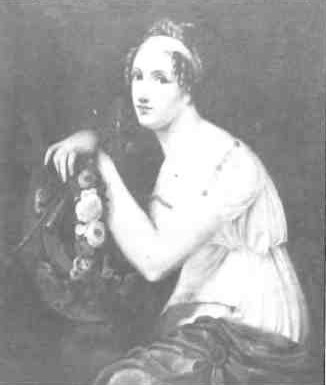
The entry to the Pinakothiki is somewhat abrupt and disconcerting. One is catapulted, as it were, into an unexpectedly large and high-ceilinged exhibition hall which effectively confuses the viewer’s perspective and sense of dimension. A heterogeneous group of randomly arranged sculptures of varying shapes and sizes — and without identifications — adds to the feeling of disorientation. This section, devoted to contemporary Greek sculpture, has not yet been completed, which accounts for the confusion. Presumably these conditions will be corrected and visitors to the museum after August may be more fortunate.
From this hall an enclosed ramp — the garden of sculptures, the full architectural complex of the Pinakothiki, and the city traffic may be glimpsed through curtains — leads to the main wing of the museum where the permanent collection of Greek painting is housed. A smattering of sixteenth-and seventeenth-century icons, in the style of Byzantine hagiography, introduces the collection, leading abruptly to nineteenth-century, Ionian Island portrait studies and a series of stiffly-executed, romantic-heroic paintings by Theodoros Vryzakis, the latter of historic interest because of their depiction of scenes of events from the Greek War of Independence. The influences of Romanticism and Classicism, prevalent in nineteenth-century Europe, are immediately discernible in the rather amusing The Muse Euterpe’ by Philippos Margaritis and ‘The Sculptor’ by Vassilios Skopas.
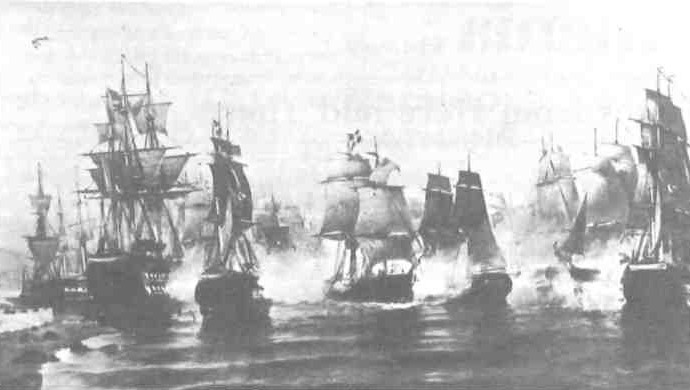
The latter third of the century is represented by works of the two most significant Greek painters of that period, Nikiphoros Lytras and Nicolaos Gyzis. The museum boasts major works by both artists including Lytras’s ‘Lamentations at Psara’, ‘Antigone and Polykeicis’, and many of his small, well-known works, and Gyzis’s ‘Children’s Engagement’, ‘The Vow’, ‘Greek Boys Being Recruited by the Turks’, and several of his small, excellent portraits. The comprehensiveness of the collection provides a complete picture of the artists’ styles and development. That Lytras excelled when painting scenes and characters from the cafe, the street, and family life, is evident. His smaller paintings are by far the best and most ‘modern’ with basic pith and vitality as in ‘Mother and Child’. Gyzis, by contrast, emerges as a more complex and emotional artist sensitive to movements in European painting. The style, subject matter, and composition of ‘After the Destruction of Psara’ clearly reveals the influence of Delacroix’s ‘The Wreck of the Medusa’, and ‘The Vow’, that of German Romanticism. In contrast, ‘Judith and Holofernes’, a small painting with exaggerated, eerie chiaroscuro and ‘The Celestial Bridegroom’ show a clear leaning towards symbolism, while ‘Spring Symphony’, bathed in an all-pervading, transluscent light, reveals the influences of both Turner and the Impressionists. Gyzis’s small portraits such as ‘The Loser of the Bet’ and ‘The Grandmother’ are outstanding. The chief exponents of seascapes in Greece during the latter part of the nineteenth century, Constantinos Volanakis, loannis Altamouras and Vassilios Chatzis, are represented by an extensive collection of interesting and often lovely seascapes and admirably executed naval battles. Chatzis, the youngest of the three artists (he died in 1915), painted mostly small compositions noteworthy for the artist’s skilled treatment of light.
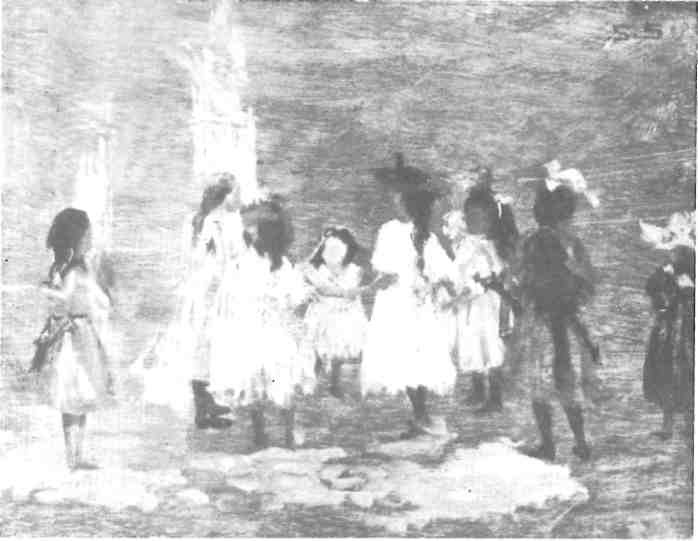
A selection of works by a group of heterogeneous artists — their works are in various styles and show various influences — who were all born after the second half of the nineteenth century, have been hung together in the section referred to in the catalogue as ‘Open-Air Painting’. These include works by Georgios Iacovides, in the tradition of Lytras’s genre painting, but with more Impressionistic results as in ‘The Children’s Concert’; Pericles Pantazis, an important member of the Belgian school of Impressionism and Simeon Savvidis, another Impressionist. Some of the paintings, such as Constantinos Artemis’s two ‘Evangelists’, obviously reminiscent of Andrea del Sarto’s ‘Annunciation’, George Roilos’s ‘Hail Rabbi’, recalling Caravaggian chiaroscuro technique, and a bad version at that, or Mikis Matsakis’s ‘February Green on Paros’, completely lacking structure and synthesis, might well have been excluded. Pavlos Rodokanakis and Nikolaos Othoneos are each represented by a single painting, both charming and refreshing. The Pinakothiki possesses an excellent collection of the most significant works of the renowned and enigmatic Alexandria-born Constantinos Parthenis, who died in Athens in 1967. They include The Head of Christ’, on a large rotund canvas, charged with religious passion and painted in the style of the Pointillists. Other important early twentieth-century artists represented are Bouziakis, Maleas, Papaloukas and Gounaro.
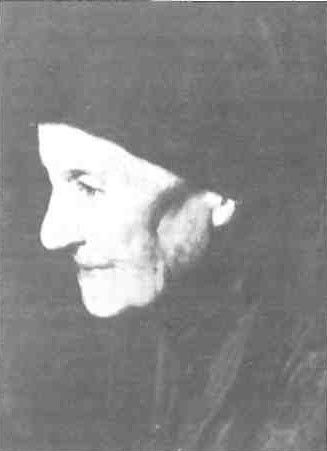
The section devoted to contemporary art includes works by Tsarouchis, Moralis, Hatzikyriakos-Ghikas, Spyropoulos, Tsingos, Vassiliou, Egonopoulos and Sikeliotis. Most justice is done, however, to Tsarouchis whose two outstanding paintings of the ‘Cafenion’ overshadow all paintings in the room.
In the section devoted to Western European art, among a host of minor artists the Museum possesses a few paintings by the great masters. In addition to four El Greco’s, there are works by Veronese, Correggio, Tiepolo, Caravaggio (his famous work, ‘The Musician’), Breughel, Murillo, Ruysdael, Theodore Rousseau and Piet Mondrian. This, however, does not comprise a significant collection and cannot give a comprehensive picture of the magnificence and splendour of the development of Western European art.
Proceeding to the section on etchings and engravings from the fifteenth to the twentieth century, one passes a display of twentieth century moderns which includes a late Picasso, a Picabia, a Fontana and three marvellously refreshing posters by Toulouse-Lautrec — ‘La Goulue’ among them. The engravings, besides the many Diirers and Holbeins, include examples from Goya’s four series: ‘The Disasters of War’, ‘Bull-Fighting’, ‘Proverbs’, and ‘Caprices’. The caricature etchings by Daumier are excellent and most nineteenth-century Impressionists are represented by engravings of familiar works. These include Millet’s ‘Gleaners’, Manet’s ‘Lola’, Degas’s ‘Dancer’, and Cezanne’s ‘Bathers’. The section on Greek engravers is fairly comprehensive, dating from the nineteenth century to the present.
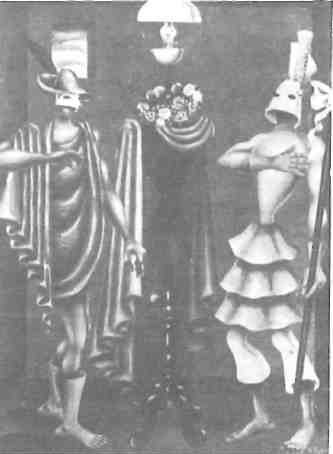
In addition to the museum’s permanent collection, there is what one could refer to as a sampling — a temporary exhibition of contemporary Greek painters, entitled ‘The Panorama of Greek Painting: 1950-1975’ in which sixty-seven artists are represented by a single painting. As a consequence justice is done to no one.
The general layout of the Pinakothiki leaves something to be desired. The labels which are in very small print are not legible from even a short distance. I found myself walking backwards and forwards across the galleries in order to read them. Furthermore, very few paintings were dated, a frustrating omission. The Pinakothiki, nonetheless, is worth a visit. Its most relevant acquisitions are its comprehensive collection of modern Greek painting and its collection of Western European prints.







